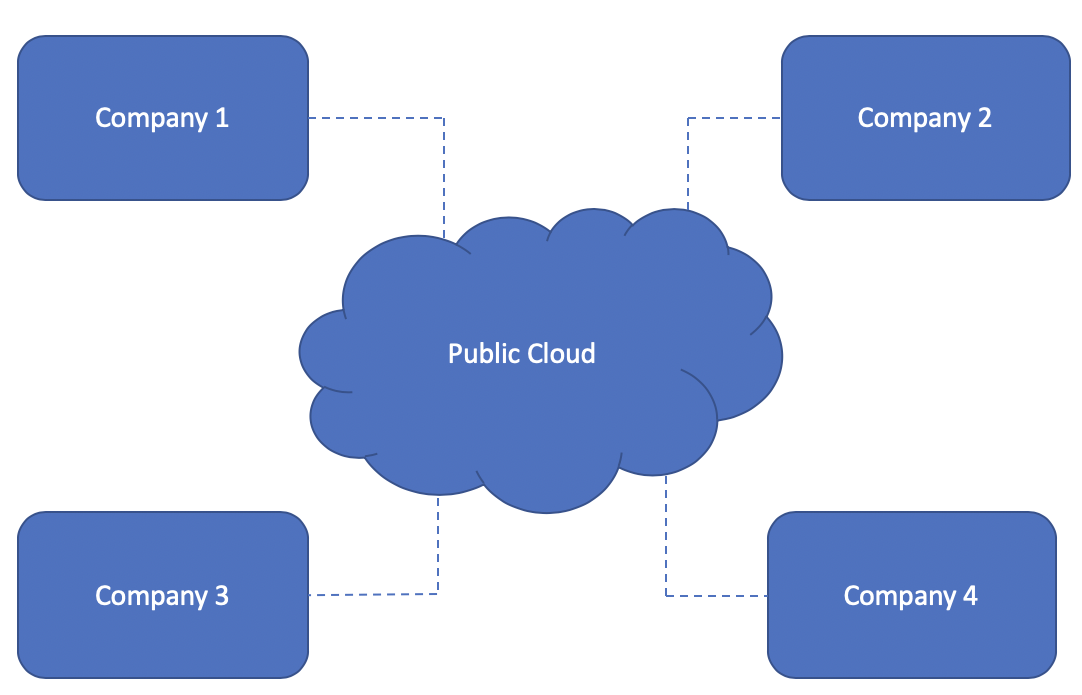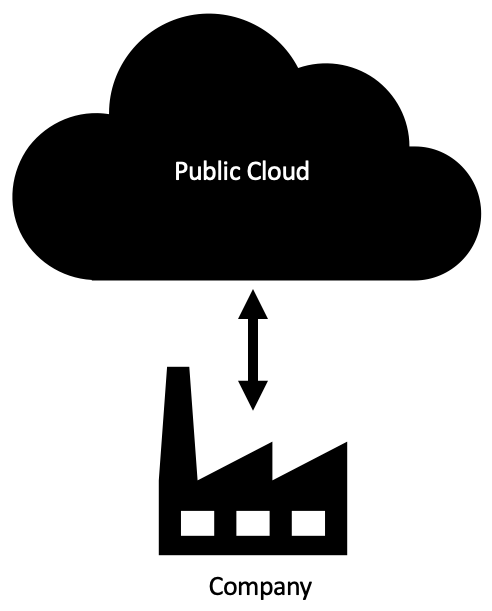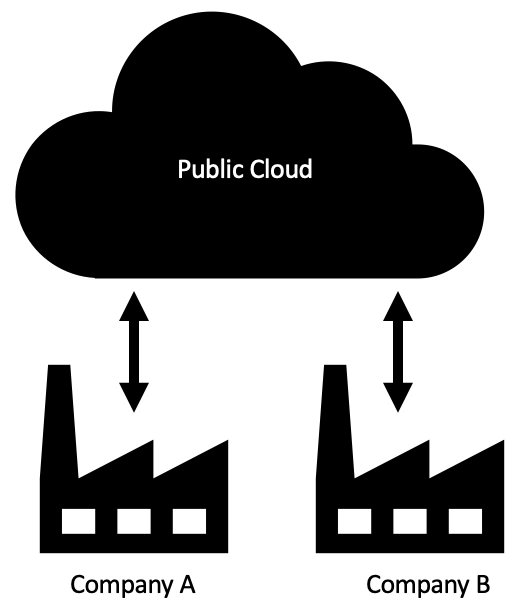The Public Cloud consists of computer resources that are available to users on the basis of a subscription. The following is a very generic depiction of a public cloud:

Virtualization is one of the fundamental characteristics and driving forces of the public cloud. Virtual resources in a public cloud appear and are similar to physical resources in an old computing center, but their activation, looking from the user's perspective, is much simpler—there is no need to configure resources, access to the requested resources is facilitated, and there is no administration.
Due to virtualization, these resources are not visible to the user.
A public cloud is a divisible, multi-use infrastructure on which the user uses a service-level agreement (SLA) with the service provider specifying the rights and obligations of both parties when using cloud resources.
Once subscribed and signed to a service-level agreement, the user can start using cloud resources on demand, for when and how long they want, and payment of the service is based on how much they consume. Public cloud service users are diverse. They can be individuals or small, medium, and large enterprises.
Computer resources are almost unlimited in capacity and do not require any capital investments from the users.
The resources are completely flexible, which means that the user can create, activate, and consume resources according to their own needs and without any limitations.
Regarding service users, four basic scenarios of a public cloud can be distinguished as follows:
- Scenario 1: By end user
- Scenario 2: By company
- Scenario 3: By end user
- Scenario 4: By another company
Let us understand each one by one:
- Scenario 1: In this scenario, the end users access the data or applications in the cloud. The most commonly used applications of this type are emails and social networking applications. The user does not need or want to know anything other than their username and password. Data is stored and managed by the cloud operator. The user is not aware of how the cloud works—if it can access the internet, it can access their data or the application they selected:

- Scenario 2: In this scenario, the company requires open cloud services for the needs of its internal data-processing and business processes. This scenario will be applied by companies that do not have much experience with the use of public cloud services because it allows them to establish a very high degree of control. Examples of using this scenario are the following:
- Using the cloud storage space for storing backups of your data or storing rarely used archive data
- Using virtual machines (VM) in the cloud when processing data, which the company carries out itself, comes to the peak load
- Using cloud-based applications to support specific functions in a company (customer relationship management, creating event calendars, email, and so on)
- Using a cloud database to process enterprise applications, which can be very useful when databases are shared with business partners, state administration bodies, and so on
The following diagram illustrates this:

- Scenario 3: In this scenario, the organization uses public cloud services to provide its services to their end users. When one end user interacts with an organization, it accesses the cloud to capture data and/or processes them in order to deliver the results to another end user. The end user may be an employee or an external client of an organization:

- Scenario 4: This scenario refers to a situation where two companies use the same public cloud. In this case, the emphasis is placed on the application of both companies, which will enable their interoperability (cooperation and interaction).
This public cloud application scenario is most often used to manage the supply chain or value networks:

All of these four scenarios outline the use cases of the Public Cloud.
For companies that would like not to share their resources, then a private cloud, discussed in the next section, is a better solution.